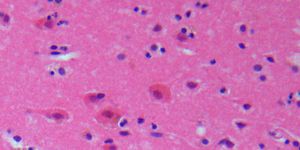The Rhythm of Gene Expression
Our bodies naturally follow the cycle of the day, in a process termed circadian rhythm. Researchers at the Salk Institute wanted to explore how gene expression changes in sync with that rhythm and found that 80 percent of genes assessed, in many different kinds of tissues, follow the circadian cycle as they are turned on and off. While it’s been known that genes activate in such a rhythm, this is the most in-depth study of gene transcription cycles, and it may yield insight into how disruption to the body’s day/night rhythm can cause disease. The research has been reported in Science.
"This is the first time a reference map of daily gene expression has been established," explained senior author Satchidananda Panda, a professor in Salk's Regulatory Biology Laboratory. "It's a framework to understand how circadian disruption causes diseases of the brain and body, such as depression, Crohn's disease, IBD, heart disease or cancer. This will have [a] huge impact on understanding the mechanisms or optimizing cures for at least 150 diseases."
Genes are first transcribed into RNA before they are translated into proteins, so the team sequenced RNA to find the active genes, every two hours over 24 hours, in dozens of non-human primate tissue types. Each tissue carried genes that were activated in different ways over the course of the day.
The team saw that there were a different number of cyclic genes in various types of tissue; in some tissues, hundreds of genes were rhythmic and in others, thousands were. The genes activated most often also displayed more significant variability in their expression.
About 11,000 of 25,000 primate genes were active in every tissue analyzed. Almost all of those (96.6 percent) were especially rhythmic in at least one kind of tissue and showed dramatic variability when sampled. The transcription of genes peaked in the early morning and the late afternoon; in the evening it was reduced. The number of rhythmic genes was higher than expected at about 81.7 percent.
"These findings provide new insights that could influence how scientific research is validated. For example, scientists trying to replicate previous work may pay closer attention to when specific assays were conducted," noted the co-senior author of the report Howard Cooper, a visiting scientist at the Salk Institute. These molecular cycles may also help improve the effectiveness of drugs; they may work better at certain times of the day.
"We show that more than 80 percent of FDA-approved drug targets are rhythmic in at least one tissue," said Ludovic Mure, a Salk staff scientist and first author on the paper. "In addition to the drug target, many other mechanisms that affect drug efficiency or toxicity, like its absorption, metabolization, and excretion, may be modulated by the circadian clock."
This work may illuminate how late-night work and lifestyles impact health (learn more from the video below featuring Panda). It may also advance the study of aging. Such cycles are frequently disrupted as we get older.
"This is a list of how genes are differentially expressed in different organs, and that will give us a framework to understand if shift work and other disruptions change how genes are expressed," said Panda. "For earlier circadian rhythm research, we did not have a reference, so this is like having a human reference genome."
Sources: AAAS/Eurekalert! Via Salk Institute, Science









